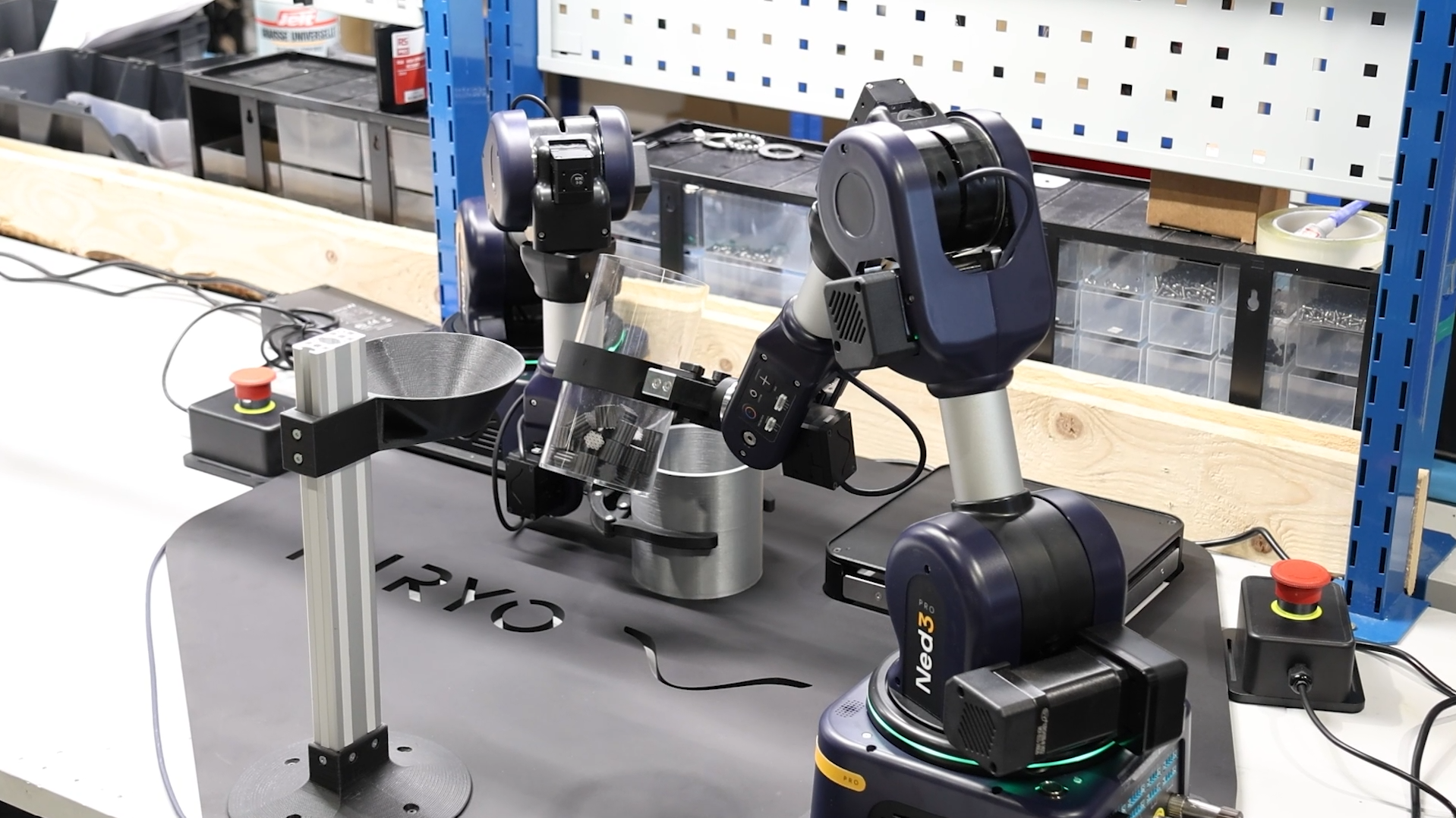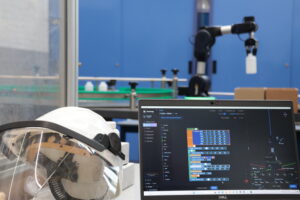The advent of robotics is profoundly transforming the French industry. At the heart of this revolution, the 6-axis robotic arm stands out due to its versatility and precision.
This equipment, a true concentration of technology, offers a multitude of solutions for automating complex tasks. Its advanced features, such as its wide range of movement and its ability to handle products with extreme precision, make it an indispensable tool in many industries. The goal of this article is to explore the various applications of this type of robot. We will examine how it can be used to improve the efficiency of production lines, optimize industrial processes, and perform specific tasks such as welding, measurement, or storage.
The secrets of robotic movement
Modern robotics, whether it involves complex solutions like palletizing robotics or simpler systems, relies on a deep understanding of kinematics and dynamics. These two fields are essential for designing and controlling high-performance robots capable of carrying out complex tasks in various industrial environments.
Direct and inverse kinematics
Direct kinematics determines the position and orientation of the end of a robot arm from the angles of its joints. Inverse kinematics solves the opposite problem: calculating the angles required to reach a given position.
These concepts are crucial for precise robot positioning, whether for applications such as welding, measurement, or storage. Practical exercises help master these concepts and develop a robotic solution tailored to each project. The data collected improves robotic tools.
Robot dynamics
Dynamics studies the forces and torques that act on a programmable robot in motion. It helps understand how these forces influence the arm’s speed and acceleration. Movement simulation is a valuable tool for optimizing robot dynamics, minimizing vibrations, and improving trajectory clarity. A solid understanding of dynamics is essential to ensure the stability and reliability of robots, particularly in applications requiring fast and precise movements.
The products derived from these studies are then put into production, improving automation solutions in France. These solutions are integrated into industry, where they are used by machines designed with cutting-edge equipment, complemented by high-quality services.
Advanced programming and control
The era of advanced robotics demands precise mastery of programming and control techniques, which transform robots into high-performing solutions tailored to meet the challenges of modern industry.
Robotics programming languages
Programming languages are essential tools for bringing robots to life. ROS (Robot Operating System), an open-source framework, offers a robust software architecture for complex automation systems. Python, with its versatility and rich libraries, allows the development of custom applications ranging from complex trajectory programming to sensor integration for adaptive control. These tools help optimize production and welding tasks, among others.
Control techniques
Precise control of machines is crucial to ensure the quality and efficiency of robotic solutions.
- Closed-loop control, using feedback from sensors, ensures continuous correction of the robot’s actions.
- PID control, with its adjustable parameters, provides greater clarity in the most demanding tasks.
- The implementation of advanced control strategies, such as predictive control, opens the way to innovative solutions for industrial automation.
These techniques contribute to the development of advanced products and equipment that meet the specific needs of each project, both in France and internationally. Robotic arms used in storage and production services are tangible examples of these techniques in action.
Perception and artificial intelligence
The integration of perception and artificial intelligence (AI) is transforming robotics, enabling robots to understand their environment and make complex decisions.
Computer vision
Computer vision, a branch of AI, enables robots to see and interpret the world around them. The integration of cameras and sensors enables object recognition, while deep learning, an AI technique, is used for accurate detection and classification. These capabilities pave the way for applications such as pick-and-place, where robots can pick up and manipulate objects with precision, and quality inspection, where they can detect defects and anomalies.
Artificial intelligence
Artificial intelligence plays a critical role in enhancing the capabilities of robots. Reinforcement learning, an AI technique, enables robots to optimize their movements by learning from experience. Neural networks, AI models inspired by the human brain, are used to plan complex trajectories, enabling robots to move smoothly and efficiently. In addition, AI enables the development of autonomous behaviors, where robots can make decisions and act independently.
Practical applications and projects
Robots are used to automate repetitive tasks, improve precision and safety, and develop innovative new solutions.
Examples of applications
In industry, robots are often used to assemble products, weld and paint, and handle fragile objects. Collaborative robots, or cobots, enable closer cooperation between humans and machines. In the laboratory and in education, robots are used to conduct experiments, simulate processes, and train students in robotic technologies.
Projects to undertake
The creation of a collaborative robotic arm is a stimulating project that allows for the development of skills in design, programming, and robot control. The development of an automated sorting system is a concrete application of computer vision and artificial intelligence. Simulating a production line helps optimize industrial processes and reduce costs.
















